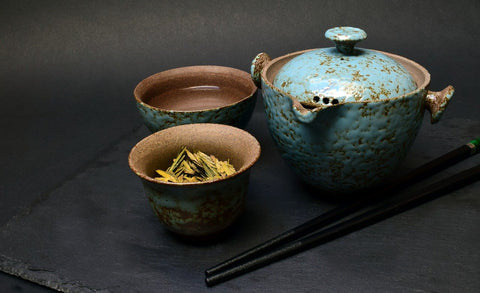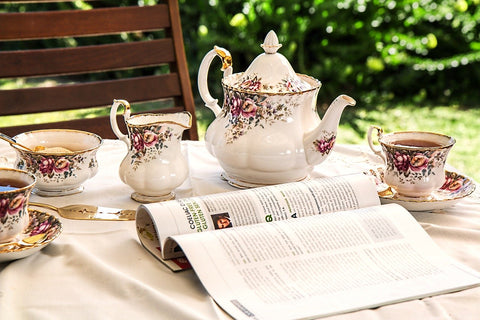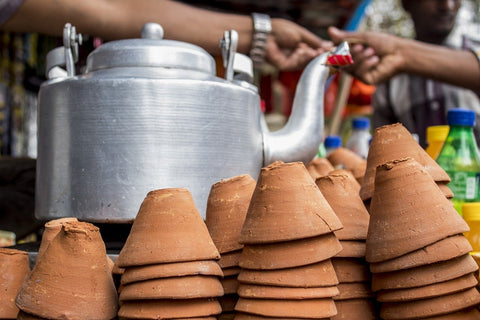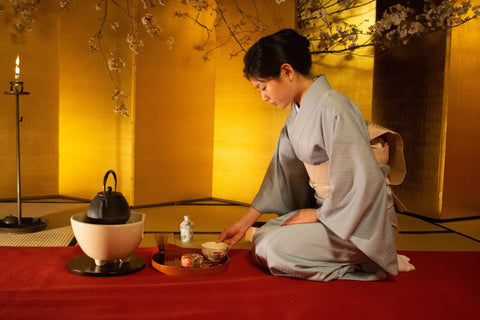Six Popular Tea Cultures and Traditions Around the World
Practicing social distancing by staying at home is becoming the new norm. This is a good time to get your brains going and learn new stuff. What better way to do this than by learning some of the popular tea culture and traditions around the world.
Tea has become a staple in most households around the world. It is consumed on a regular basis, making tea as the second most popular drink in the world. It definitely has found its way from our tables and into our hearts. Still, there’s more to tea than just being a drink. Aside from its amazing taste, tea has a variety of detoxifying health benefits. It also helps you stay focused and relaxed.
Interesting Tea Cultures and Traditions Worldwide
Tea drinking is an age-old tradition that involves diverse techniques of preparation, presentation, and consumption in different countries. Let’s take a look at 6 of the most popular tea cultures and traditions globally.
Chinese Cha-Dao

As early as 2732 BC, the Chinese people have already considered tea as a way of life. With the diverse climate of the country, Chinese tea varieties have emerged throughout the years. These varieties include jasmine tea, green tea, white tea, yellow tea, black tea, dark tea, oolong tea, and pu-erh tea.
Cha-Dao, the art of making tea, is closely associated with the Chinese philosophy of pursuing balance and harmony. Serving tea is ritualized by Gong Fu, a traditional tea ceremony that continues to thrive even today. This formal ceremony involves a detailed process of serving tea that requires time and effort to master the art.
English Afternoon Tea

According to a survey by Statista, an average of 4 to 5 cups of tea was consumed daily in the United Kingdom in 2019. Undoubtedly, tea is a major part of the British people’s day-to-day life. It was introduced to England in the 17th century, but it was only in 1840 that the iconic afternoon tea tradition became a key part of Great Britain’s identity.
Classic afternoon tea was intended to fill in the long lunch-dinner gap when dinner was served as late as 8 p.m. Black tea is the most popular tea in England. The English created their own style of tea by integrating milk and sugar. A dainty afternoon tea is ideally served around 4 p.m. alongside sweet treats like scones, cakes, and sandwiches.
Indian Chai Tea

India is one of the largest producers and consumers of tea in the world. Although this is the case, the country’s tea culture is not as intricate as the other cultural ceremonies mentioned in this article. India is the land of chai tea, the country’s national drink. Chai is a blend of black tea leaves, milk, sugar, and spices such as ginger, nutmeg, cinnamon, fennel, cloves, cardamom, and pepper.
Although regional recipes differ, this spicy tea is a fundamental element in the day-to-day lives of Indians. The tea is literally served everywhere – offered to house guests, sipped on-the-go, and sold on the streets. Vendors called chai wallahs are often found, day and night, in nearly every street corner with stalls selling chai tea in clay cups.
Japanese Chanoyu

Introduced in Japan during the 12th century by Zen Buddhists and Chinese monks, drinking tea was only for the emperor’s court and high officials. It wasn’t until the 16th century that tea became a normal part of the Japanese culture. Drinking tea is considered a part of the food culture and a high art in Japan. It highlights the beauty in simplicity and appreciation of the moment.
Practicing this art involves learning the traditional Chanoyu tea ceremony. It uses matcha, derived from ground green tea leaves to brew an exquisite, frothy tea. The tea ceremony is a highly detailed ritual from preparation, to presentation, and until consumption. The tea blend goes well with sweets to counter the bitter matcha flavor.
Moroccan Touareg Tea

Tea was introduced in Arab countries like Morocco through the same trading routes that introduced tea to Russia. Moroccan mint tea, the heart of the culture, is also known as Touareg tea or Maghrebi mint tea. It consists of a customary blend of mint, green tea leaves, and an ample serving of sugar.
Touareg tea is traditionally served as an act of hospitality in welcoming guests. It is ideally poured into colorful frosted glasses in three servings. Each glass serving has a unique flavor and has a specific meaning – gentle as life, strong as love, and bitter as death, respectively. This refreshing beverage is usually accompanied by an assortment of fruit pastries and spiced nuts.
Russian Zavarka

In 1880, the completion of the Siberian Railroad made tea trade easier. This paved way for tea to become widely available to Russia’s working class. The Russian caravan tea tradition began when food and drinks needed to be stretched to serve as many as possible. It involved a 2-step brewing process wherein a strong tea-based concentrate, zavarka, was brewed in a small metal teapot placed on top of a samovar. Samovar, a tall urn used to brew water, has a spigot that controls the amount of hot water to be used. Small amounts of the tea concoction are then poured into cups and diluted with hot water coming from the samovar.
In Russia, offering a cup of tea to house guests is a hospitable gesture. Nowadays, Russian hosts serve zavarka with milk, sugar, honey, lemon, and other herbs. Tea is also paired with snacks like cookies, crackers, and cakes. When in Russia, be sure to pair your tea with the munchies being served. It is considered a rude gesture to only drink the tea.
The Takeaway
Tea is not just a drink to quench our thirst or keep us warm. It is honed by diverse cultures and ancient traditions from different countries. No matter how tea varies in flavor, preparation, presentation, serving, and consumption, it remains a universal beverage loved by many people around the world.
References:
https://www.mentalfloss.com/article/72891/15-tea-traditions-around-world
https://theculturetrip.com/asia/china/articles/tea-traditions-around-the-world/
https://www.travel.earth/fascinating-tea-traditions-around-the-world/
https://food.ndtv.com/food-drinks/7-interesting-tea-traditions-from-around-the-world-1789995
